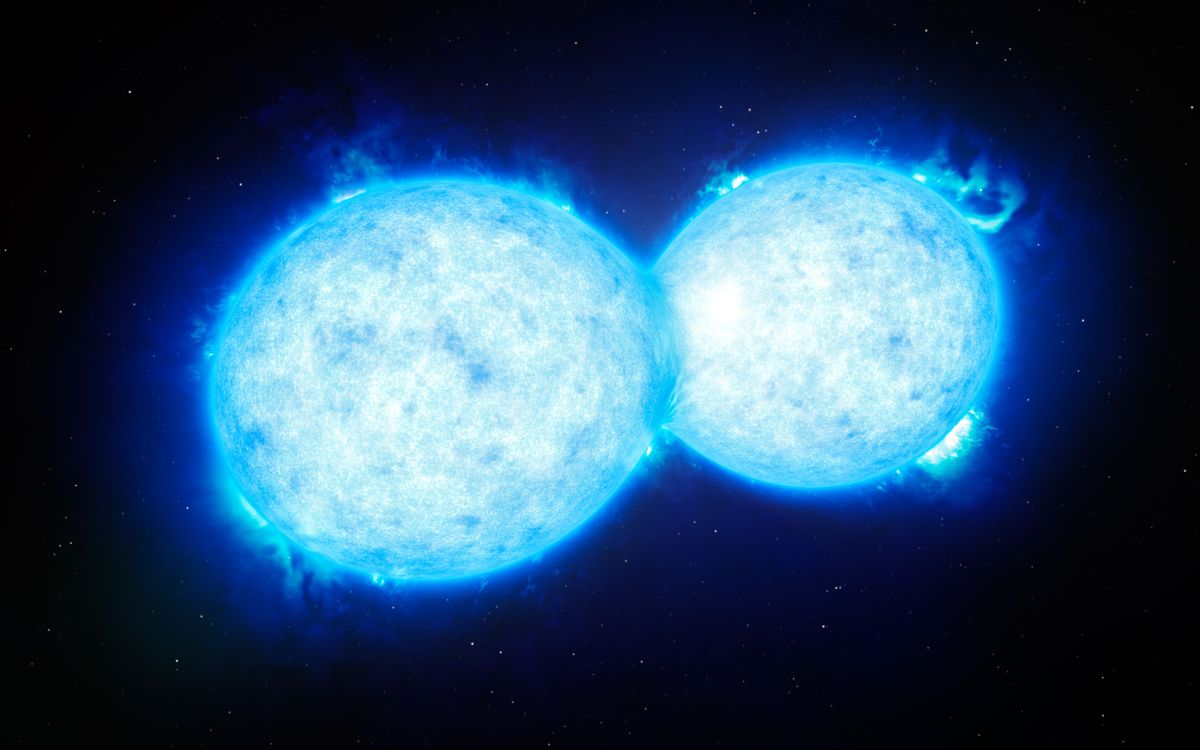Ahead of a 7 January 2017 presentation at this years’ meeting of the American Astronomical Society, numerous news outlets reported on a remarkably specific prediction made by a team of Calvin College astronomers: at some point around the year 2022, a normally faint star in the constellation Cygnus will explode, appearing out of the darkness to temporarily become one of the brightest objects in the sky.
To be more precise, two normally faint stars—binary stars so close to each other that they are termed contact binaries (and actually share the same atmosphere) will collide to form a single object. If the researchers are correct, the collision will produce a rare stellar explosion event termed a “red nova”, which is thought to occur only when two main sequence stars (similar to our own Sun) merge. The Washington Post’s Blaine P. Friedlander Jr, speaking to lead author Larry Molnar, described the prediction in a 6 January 2017 article:
As the constellation Cygnus glides gracefully along the Milky Way every late spring and summer, the cosmic bird’s left wing houses a faint binary star called KIC 9832227. The two stars spinning around one another are merging, on a path to an explosion that will result in a red nova, said Molnar and his colleagues.
This current prediction is a followup to a presentation made by the same team at the 2015 American Astronomy Society meeting. In that talk, the researchers compared light intensity data from KIC 9832227 to similar data that had been serendipitously collected prior to a known red nova event back in 2008, which showed the orbital period of the stars decreasing rapidly before the blast:
In 2008, Romuald Tylenda, a Polish astronomer, observed such an explosion. Shortly after, Tylenda realized, by coincidence, she had partial data on the stars leading up to the collision. In that data, there was a pattern. The stars — as they got closer to impact — seemed to be growing closer together. The length of time they took to orbit one another was decreasing, like two tether balls getting wrapped up around the same pole. They spun closer and closer, faster and faster, until ... bang!
In 2015, the Calvin College researchers found that their data from KIC 9832227 and the data from the star preceding the 2008 red nova were similar, but they needed to rule out other explanations before they could be sure. Their recent work purports to have removed that uncertainty.
In the 2017 talk, the researchers provided additional light curve data from the compact binary system (that continues to fit with the comparison they made in 2015) as well as data on the spectra of the star, which shows two distinct stellar objects consistent with a compact binary system:
Based on an updated fit to the exponential formula, we now estimate the time of merger to be the year 2022.2 with a random uncertainty of 0.6 years. These results greatly strengthen the original suggestion. The system presents an unprecedented opportunity to study the mechanism of stellar merger through targeted observations of a precursor.
If they are correct, this would be the first time scientists have predicted a binary star collision, and the event would also provide insight into red novae, which were only first described in the late 1980s and are still not completely understood.
In basic terms, a red nova is brighter than a nova explosion but not as bright as a supernova. They are thought to occur when the binary stars become so close that the tidal forces imposed by the major star essentially break apart the forces holding the secondary star together. In describing the 2008 red nova, Tylenda described the event as follows, positing that the event lasted about six months:
The progressive shortening of the orbital period finally led to engulfing the secondary by the primary’s envelope. This probably took place at some point in February 2008, when the signs of the binary motion disappeared from the light curve. The secondary, or rather its core, now spiralling in the common envelope, started to release the orbital energy and angular momentum at an increasing rate. The result was the gradual and relatively gentle brightening of the object, doubling the brightness every ~19 days.
Speaking to Resnick, Molnar described what he expects to see for KIC 9832227 in similar terms:
In 2022, he forecasts we’ll see the two stars — one about 40 percent more massive than the sun, the other about a third of its size — get so close that their outer atmospheres will graze one another, and the smaller star will take a dive into the larger one. Most of the energy of the collision will go to forming a new star with an even more massive core.
But a lot of energy will blow off the outer layers of the stars. “And that has to go somewhere.” This type of explosion is called a “red nova” because, well, the light that flashed out of it is red in hue.
For what its worth (and it’s not worth much), positing this event to occur in the year 2022.2 places it as beginning on 15 March 2022. To quote Shakespeare, “A soothsayer bids you beware the Ides of March.”
